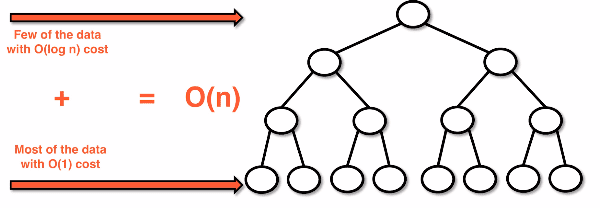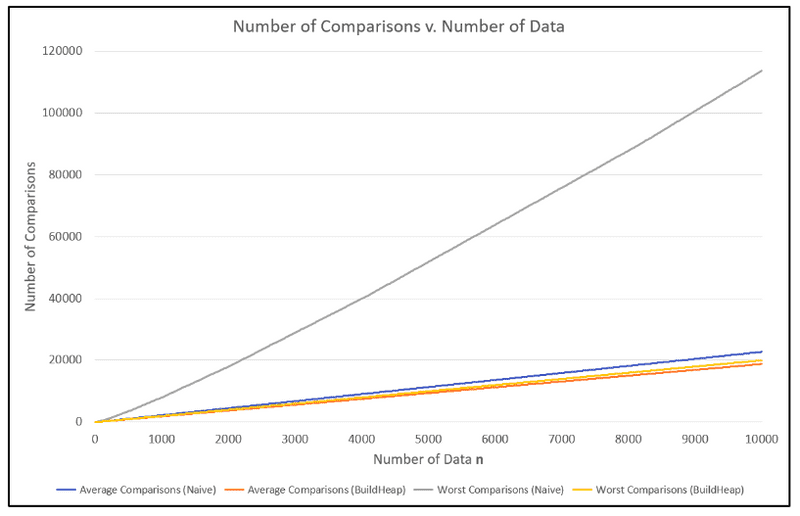buildheap algorithm
The buildheap algorithm constructs a heap in linear time. This is an improvement over the naive implementation of adding one elemnt at a time in O(nlog(n)).
The idea uses a buildheap subroutine quite heavily from the remove operation.
Problem description
- input - unsorted, unordered array
- problem - construct a heao from the input
- possible solution - use the add method to add all data to an empty heap one by one
- adding to a heap is O(log(n))
- we add to the heap n times
- this solution is O(nlog(n))
- this would be improved with an alternative approach
Validity of down-heap
If we have valid sub-heaps as children we can take advantage of the down-heap by understanding that we can down-heap into valid sub trees.
Buildheap algorithm
Build heap properties:
-
shape property - put the data in as presented
-
order property:
- look at sub-heaps
- down-heap through valid subheaps
-
Ensuring that the shape property is enforced and using down-heaps can reduce our construction time
-
Building needs to be done from the bottom up
-
Note: We iterate through the index using
n / 2wherenis the size- This allows us to reduce the number of down-heap operations by avoiding looking at children
- A down-heap helper method should be implemented generally for any index so it can be reused
Buildheap algorithm efficiency
- Down-heap is O(logn)
- Building a downheap does n/2 operations
- The build-heap algorithm is O(n)
Linear increase in down-heap cost:
Cost differences in down-heap costs:
Number of comparisons v. number of data in down-heaps:


